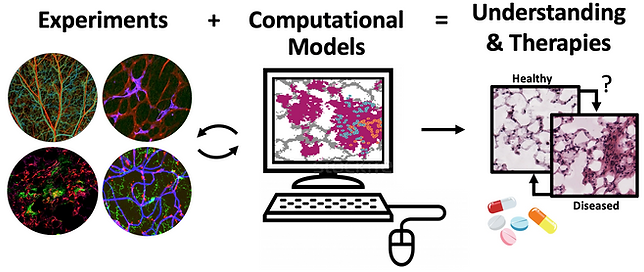
RESEARCH
Every tissue and organ requires oxygen and nutrients carried in the blood in order to function, and blood vessels deliver blood to and from all of your tissues. Microvessels are the smallest blood vessels in the body, and your body contains billions of them. Microvessels are less than 100 micrometers in diameter, and they can only be visualized using a microscope. Normally, microvessels are connected in branched networks, but if you put all of the microvessels in your body in a straight line, they would wrap two times around Planet Earth. Microvessels constantly grow and disappear, depending on how much oxygen and nutrients your tissues need.
Our research is seeks to understand how microvessels grow and change over time. We apply this understanding to develop therapies for growing new tissues (tissue engineering), regenerating damaged tissues (tissue regeneration), and preventing microvessel maladaptations during disease. Therefore, our research aims to address a critical bottleneck for all of tissue engineering and regenerative medicine: growing new functional and sustainable microvessels that can deliver blood to the tissues that we are trying to heal, replace, and/or protect from disease.
In the Peirce-Cottler lab, we conduct experiments and we build computer models to understand the complex molecular signals and cell behaviors that cause microvessels to grow and disappear. By combining experimental studies with computational models we can predict how microvessels will change over time and design new therapies to help them function normally, prevent disease progression, and grow properly when we need tissues to regenerate.
